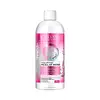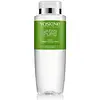What's inside
What's inside
 Key Ingredients
Key Ingredients

 Benefits
Benefits

 Concerns
Concerns

No concerns
 Ingredients Side-by-side
Ingredients Side-by-side

Water
Skin ConditioningPEG-6 Caprylic/Capric Glycerides
EmulsifyingPropanediol
SolventHyaluronic Acid
HumectantAllantoin
Skin ConditioningPanthenol
Skin ConditioningCucumis Sativus Fruit Extract
EmollientHydrolyzed Glycosaminoglycans
HumectantXylitol
HumectantGlucose
HumectantXylitylglucoside
HumectantAnhydroxylitol
HumectantCetrimonium Bromide
AntimicrobialHydroxyacetophenone
AntioxidantLevulinic Acid
PerfumingSodium Levulinate
Skin ConditioningTetrasodium Glutamate Diacetate
Glycerin
HumectantPropylene Glycol
HumectantCitric Acid
BufferingWater, PEG-6 Caprylic/Capric Glycerides, Propanediol, Hyaluronic Acid, Allantoin, Panthenol, Cucumis Sativus Fruit Extract, Hydrolyzed Glycosaminoglycans, Xylitol, Glucose, Xylitylglucoside, Anhydroxylitol, Cetrimonium Bromide, Hydroxyacetophenone, Levulinic Acid, Sodium Levulinate, Tetrasodium Glutamate Diacetate, Glycerin, Propylene Glycol, Citric Acid
Water
Skin ConditioningPEG-6 Caprylic/Capric Glycerides
EmulsifyingGlycerin
Humectant1,2-Hexanediol
Skin ConditioningAloe Barbadensis Leaf Juice Powder
Skin ConditioningRice Ferment Filtrate
Skin ConditioningHydrolyzed Candida Saitoana Extract
Skin ProtectingBetaine
HumectantPullulan
Polysorbate 20
EmulsifyingDisodium EDTA
Buteth-3
SolventButylene Glycol
HumectantSodium Benzotriazolyl Butylphenol Sulfonate
UV AbsorberTributyl Citrate
SolventEthylhexylglycerin
Skin ConditioningHydroxyacetophenone
AntioxidantPhenoxyethanol
PreservativeWater, PEG-6 Caprylic/Capric Glycerides, Glycerin, 1,2-Hexanediol, Aloe Barbadensis Leaf Juice Powder, Rice Ferment Filtrate, Hydrolyzed Candida Saitoana Extract, Betaine, Pullulan, Polysorbate 20, Disodium EDTA, Buteth-3, Butylene Glycol, Sodium Benzotriazolyl Butylphenol Sulfonate, Tributyl Citrate, Ethylhexylglycerin, Hydroxyacetophenone, Phenoxyethanol
Ingredients Explained
These ingredients are found in both products.
Ingredients higher up in an ingredient list are typically present in a larger amount.
Glycerin is already naturally found in your skin. It helps moisturize and protect your skin.
A study from 2016 found glycerin to be more effective as a humectant than AHAs and hyaluronic acid.
As a humectant, it helps the skin stay hydrated by pulling moisture to your skin. The low molecular weight of glycerin allows it to pull moisture into the deeper layers of your skin.
Hydrated skin improves your skin barrier; Your skin barrier helps protect against irritants and bacteria.
Glycerin has also been found to have antimicrobial and antiviral properties. Due to these properties, glycerin is often used in wound and burn treatments.
In cosmetics, glycerin is usually derived from plants such as soybean or palm. However, it can also be sourced from animals, such as tallow or animal fat.
This ingredient is organic, colorless, odorless, and non-toxic.
Glycerin is the name for this ingredient in American English. British English uses Glycerol/Glycerine.
Learn more about GlycerinHydroxyacetophenone is antioxidant with skin conditioning and soothing properties. It also boosts the efficiency of preservatives.
This ingredient is not irritating or sensitizing.
This ingredient is derived from caprylic and capric acids. It is an emulsifier with emollient properties.
According to the manufacturer, it is hydrophilic and soluble in aqueous solutions (water). They also state this ingredient is stable in a medium pH range (~5 - 8).
As an emulsifier, it helps make oils and oil-soluble ingredients more soluble in water.
Learn more about PEG-6 Caprylic/Capric GlyceridesWater. It's the most common cosmetic ingredient of all. You'll usually see it at the top of ingredient lists, meaning that it makes up the largest part of the product.
So why is it so popular? Water most often acts as a solvent - this means that it helps dissolve other ingredients into the formulation.
You'll also recognize water as that liquid we all need to stay alive. If you see this, drink a glass of water. Stay hydrated!
Learn more about Water